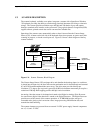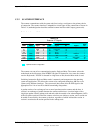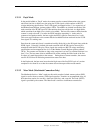
Technical Reference Guide
Compaq Personal Computers
Changed - November 1996
C-19
C.3.2.1 Pnyb Mode
In the parallel nibble or “Pnyb” mode, the scanner transfers scanned information to the system
unit (host) four bits (a nibble) at a time using the P3..P0 signals, which conform to RS-232
voltage and timing specifications. The P3..P0 signals are mapped to bits <7..4> respectively of
the Modem Status Register (primary address 3FEh). The nibbles are clocked into the host with
each transition of the PCLK signal. PCLK transitions from low to high clock in a high nibble,
which transitions from high to low clock in a low nibble. The host can assume a nibble from the
scanner is ready to be read 3.3 us after the PCLK transition requesting it. At the end of a
scanner-to-host packet transfer, the host toggles the PCLK signal an extra time (0-to-1-to-0).
This extra toggle indicates to the scanner that the last nibble has been read and sets the P3..P0
lines signals to a waiting state.
Data from the system unit (host) is transferred serially (bit-by-bit) as the SO signal along with the
PCLK signal. A data bit is clocked with each transition of the PCLK signal so that a byte is
transferred with four PCLK cycles. These signals also conform to RS-232 voltage and timing
specifications and are mapped at bits <1,0> of the Modem Control Register (primary address
3FCh). The scanner can read data as long as the setup time is at least 1 us and the hold time is at
least 3.3 us. The host must allow an additional 50 us after sending the LSb of each of the first
five bytes of a multi-byte packet to the scanner. During host-to-scanner transfers, the scanner
uses the P3..P0 lines for indicating transmission status to the host.
In the Pnyb mode, the host must insure that the high state of the first PCLK cycle of a session
completes in less than 10 us so that the scanner does not interpret a Mser mode transfer.
C.3.2.2 Mser Mode (MacIntosh Connection Only)
The MacIntosh Serial or “Mser” mode uses bit-serial transfers for both scanner-to-host (RXD
signal) as well as host-to-scanner (TXD signal) transfers. Transfers are accomplished using 10-
bit frames that consist of a start bit, a data byte (LSb first), and a stop bit. The clock (SCLK)
signal is provided by the scanner. The Mser mode is similar to isochronous transmission.


















